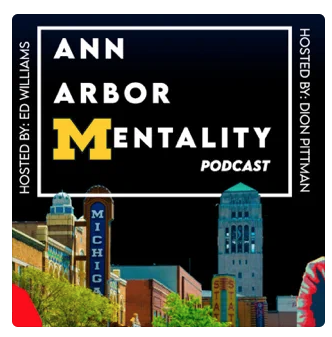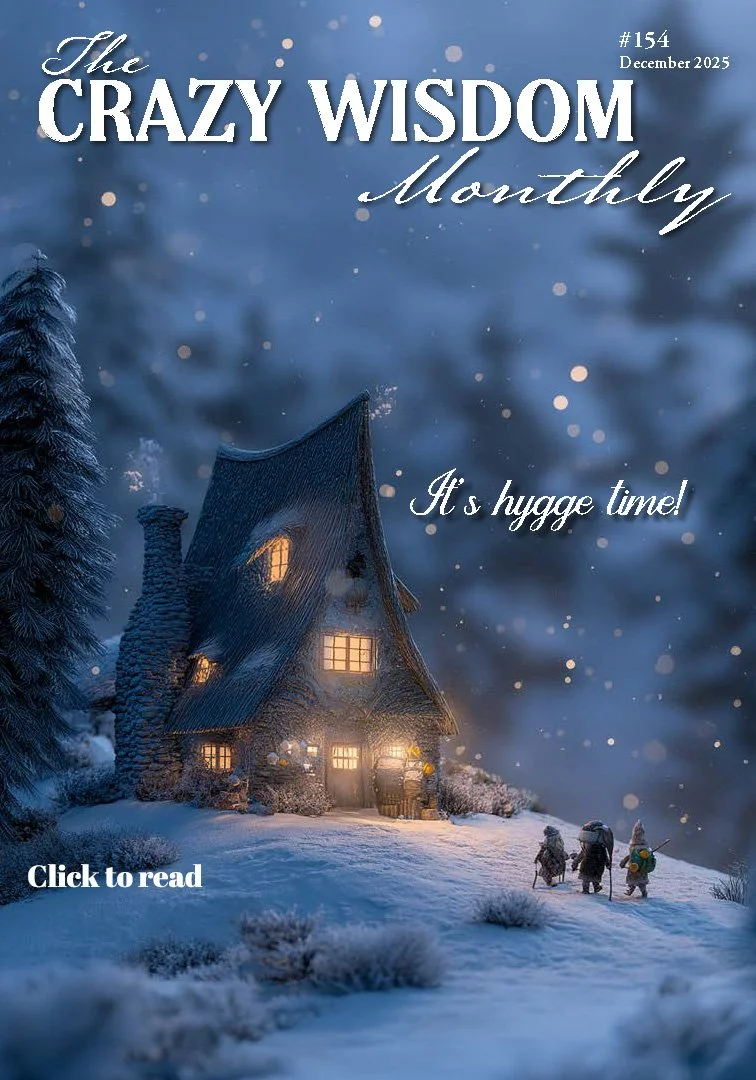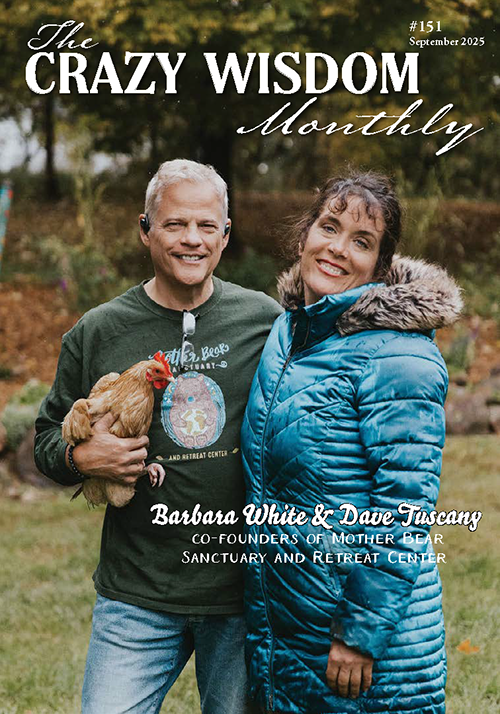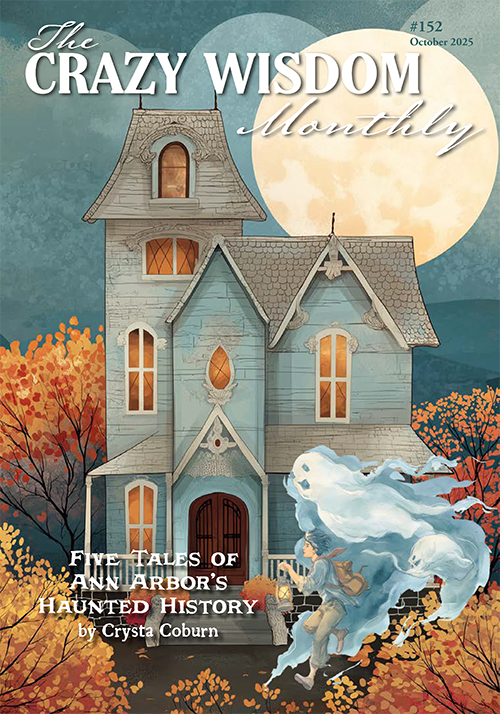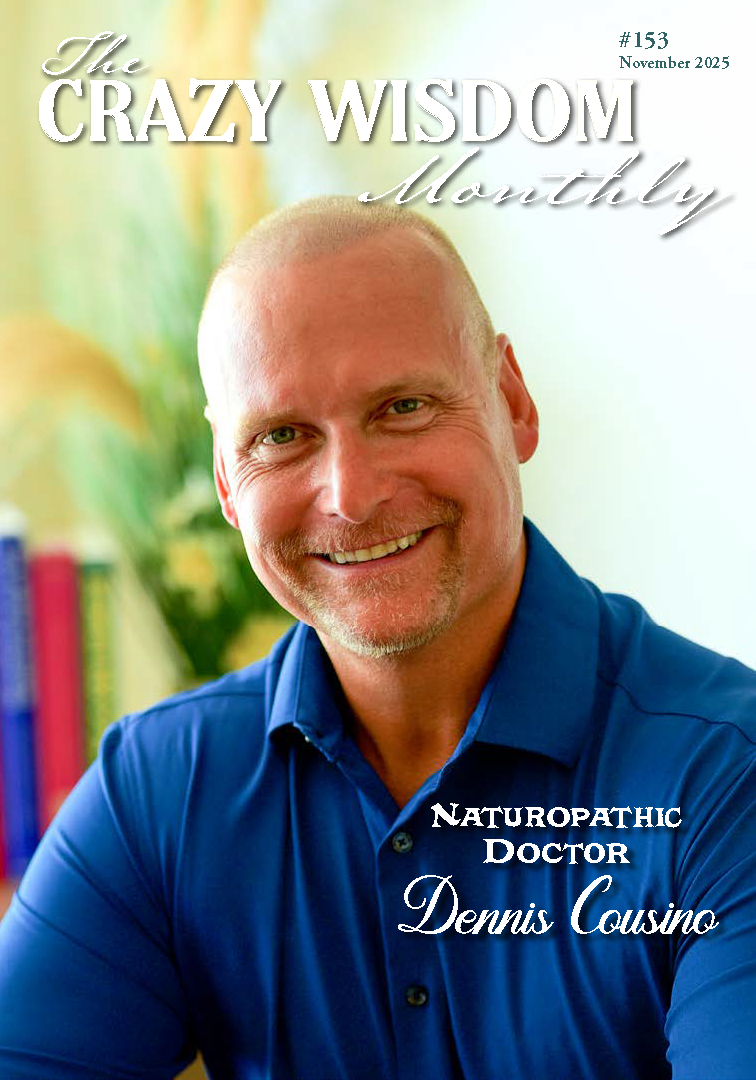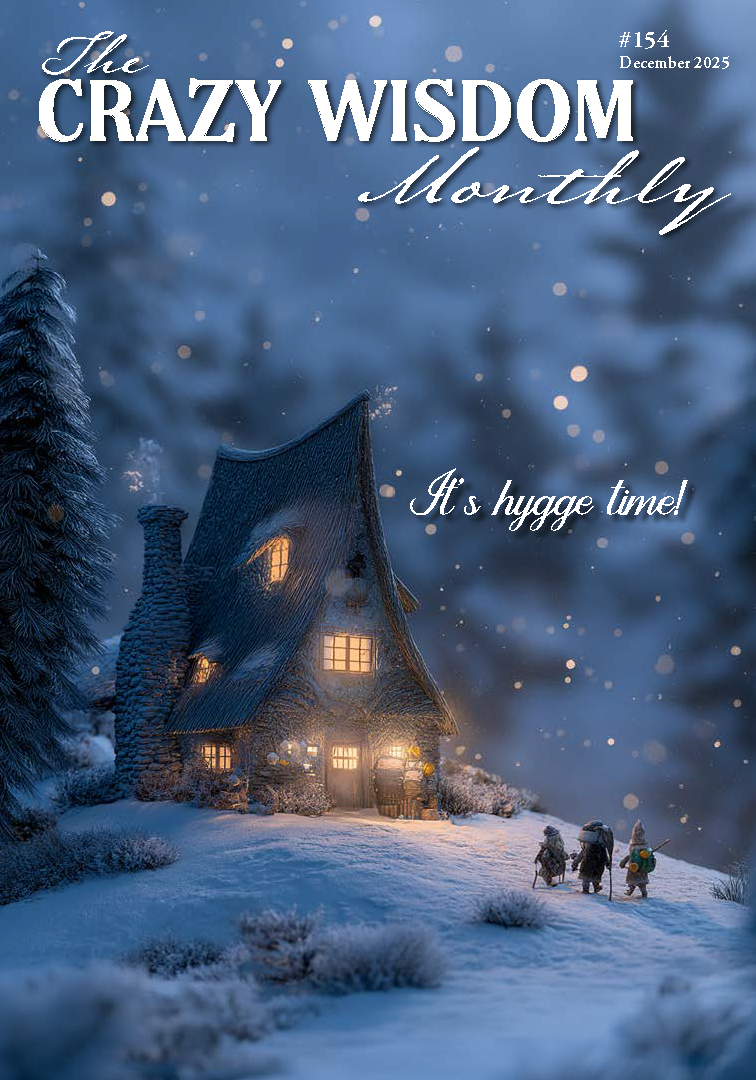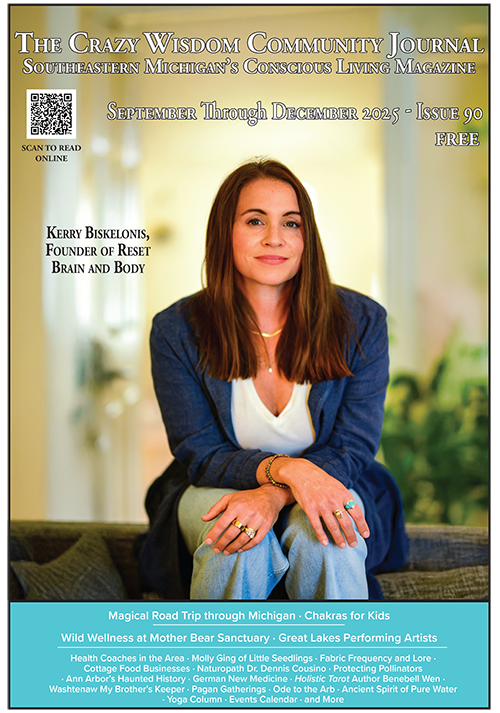We practice for these times, for times like this in the world. We go to our mat, under our shawl, sit on our cushion, to find peace amid the rubble of grief, rage, and fear. We attend to our practice precisely so that when the tides of emotion are strong, so is our practice. We return again and again to our breath, to our body and mind in the moment, returning to ourselves. Our ancestors developed these practices because they knew—they knew that we could be swept off our feet by our emotions, our ability to choose wisely blinded by the redness of rage or the waters of our grief
Shrine Leaves His Mark on Ann Arbor
By Hilary Nichols
Most of us here in Ann Arbor did not have any idea what to expect when the tall, thin man placed his ladder up York’s blank brick wall on May 20th. The artist known as Shrine is a painter, muralist, and sculptor, creating outdoor art installations all over the world for the last few decades. Originally from Pasadena, California, Brent Allen Spears, aka Shrine, has been an artist his whole life. At his grandmothers’ tables he was praised for his talents while everything else in his young world wasn’t so pretty—so he identified as an artist from a very early age. His colorful style and steady hand grew over time from realism to his current style of modern folk art mastery. Now his exaggerated, colorful, overlapping geometric designs stretch ten stories up in New York and wrap countless corner tattoo parlors and salons in Portland, San Francisco, Austin, LA, and throughout the festival circuit worldwide.
But what put him on the map as one of the truly great artists of our time is the more meaningful work that he has dedicated himself to lately. Beautiful offerings in conflict zones and refugee camps are the passion that has Shrine painting whole villages in Uganda, and a hospital in Tanzania, and a center for autistic adults in Kenya. He is ready and willing to collaborate with local artisans and everyday neighbors in areas that have no galleries. “Taking art somewhere that it has value, it is a different function. It is a personal preference, to choose to make art that will actually improve real lives.”
You can measure such actual impact by the number of people that gather at the Great Oven. While he was painting in Beirut, conflict broke out, leaving thousands in unstable conditions. Along with international chef James Gomez Thompson, Shrine painted and installed the initial Great Oven to fuel a common kitchen and the community that grew up around it. The ongoing Great Oven Project places communal ovens into refugee camps and conflict zones to provide sustainable food relief and creative community building with the great forces of food, music, and art. You can see Shrine’s cheerfully painted altar of an oven as it shines as a beacon of love on the Great Oven website.
These efforts not only add beauty where there is so much strife, but they leave this infectious discovery behind: that anyone and everyone can be an artist. “I just show people how I do it. It is simple, here are the tools and the time. Just getting that simple information out to everybody is the real gift in what I leave behind.”
In Tripoli, Lebanon, Shrine was invited to join courageous youth from two sides of a conflict as they finally abandoned hate and fear and picked up paint brushes, applying new hope and a pretty color palette to a set of stairs that divided them. «It is amazing what a common project can do.»
Shrine doesn’t take requests, and he doesn’t prepare beforehand. He arrives and surveys the scene to engage the vision as it comes. I met Shrine in 2005 when he returned from crafting trash temples in Bali on our common friend’s film project. He has been a friend and favorite artist since, but I was surprised when he responded favorably to my Instagram query so quickly. He found the few days to squeeze in the YORK commission in an instant. Between designing a five-story tower for Google and an industrial sculpture in Mexico, before a month in Lebanon, he agreed to a week in Ann Arbor. That first day, travelling through town, Shrine noted how much blue we wave, so his eye went the opposite direction to pink. No sketches or templates because that would take all the fun out of it. Making the art is his whole driving force, and he reserves that drive to inspire his 6 a.m. arrivals and long hours on the ladder in the hot sun. Eight gallons of the best paint later, he stands back to ponder the yellow, orange, and pink triangled pattern that came to life at his hand, and quickly began to cut in the scalloped edges of white along the stripes. “Some soft rounds, an organic element is called for to add some more gentle shapes for the play of pathos in this piece,” Shrine assessed.
He won’t be done until he’s totally content. Even if that means he will be painting in the dark. Shrine does intend for us to feel these patterns and colors and to imbibe on the delicious color palette as we take in food and drink. And in much the same way, we will ingest the impact of this bright addition to our favorite courtyard and be moved. There is so much glowing warmth and open heart on this wall, we can taste it as we relish in the worldly addition to our town. More Shrine to come. Stay tuned.
See Shrine’s new art at York at 1928 Packard Street in Ann Arbor. Learn more about Shrine on his Instagram.
Related Content:
What is the Ann Arbor Mentality?
In 1979 we relocated. Our first house was literally next to the “Big House,” on the University of Michigan campus. I could open my front door and see the stadium from my porch. As a child, I would use the Big House as my playground. I can remember going into Yost Ice Arena and playing on the cement, which was normally ice for games. As children, we used to be able to walk right into the stadium and explore all the time. Whether running the football field or exploring underneath the bleachers, it was our clubhouse.
How Do We Regain “Normalcy?”
Covid has shown us many things that we didn't fully see or appreciate before: how over-scheduled we were, different ways to do business, that we really are all in this together, to name just a few. Now we stand on the cusp of another change. We are getting the message that those who are vaccinated can go without masks.
Say Something Nice
Overall, I am a better therapist than I am a mother. My love for my children is unquestionably larger/deeper then my care for my clients, and yet when it comes to communicating it, I do a better job as a therapist. Being a therapist is by far less messy then being a parent, and also quite a bit less vulnerable. My ego functions are often triggered as a parent, whereas I can easily keep them out of the picture in my role as counselor. I so cherish the concept of good enough parenting. That, I can do.
Human-Centered Intentional Culture
Creating a healthy business culture with engaged employees is possible. Clarity of purpose, real care for the people involved, clear expectations and persistence can get you there. The bad news: it is hard. But the good news is that work is much more fun when approached this way.
Helping the Homeless
The day after Christmas, 2019, a day when many celebrate the birth of a homeless child, a social mediate site for Ann Arbor townies posted this question: “Would you ever open your home to a homeless person?” Forty-eight comments later, administrators closed the post’s comments. My take on these comments is that most people answered “yes,” “no” or “if I knew the homeless person.”
Setting Stories in Motion (and Movies to See!)
With the kind of work I do through my creative company — 7 Cylinders Studio — I get to interact with an ever-evolving cross section of our community.
I want to highlight a handful of those criss-crossing clients to survey our local landscape through the lens of video and provide some of the more compelling projects I’ve been fortunate to produce these past few years.
Before I Was A Psychologist
The person I looked up to most at the tennis club was a part-time instructor named Lou Graves. He was a teacher in a juvenile detention center and would kid me that I reminded him of some of his delinquents. What he meant was that I had a temper, even though my temper hadn’t gotten me into any legal trouble. It just got me into an occasional fight, including with some of my tennis opponents when I began competing in tournaments.
Community, Connections, and Ceremony
Smartphones and social media have a major impact on the way I connect with family, friends, and social groups, but I am often left with a feeling of being less connected using these platforms. Isn't it interesting how these tools that can connect us instantly with others can also leave us feeling even more disconnected? Our core craves for a more meaningful and tangible community. Let’s build one!




